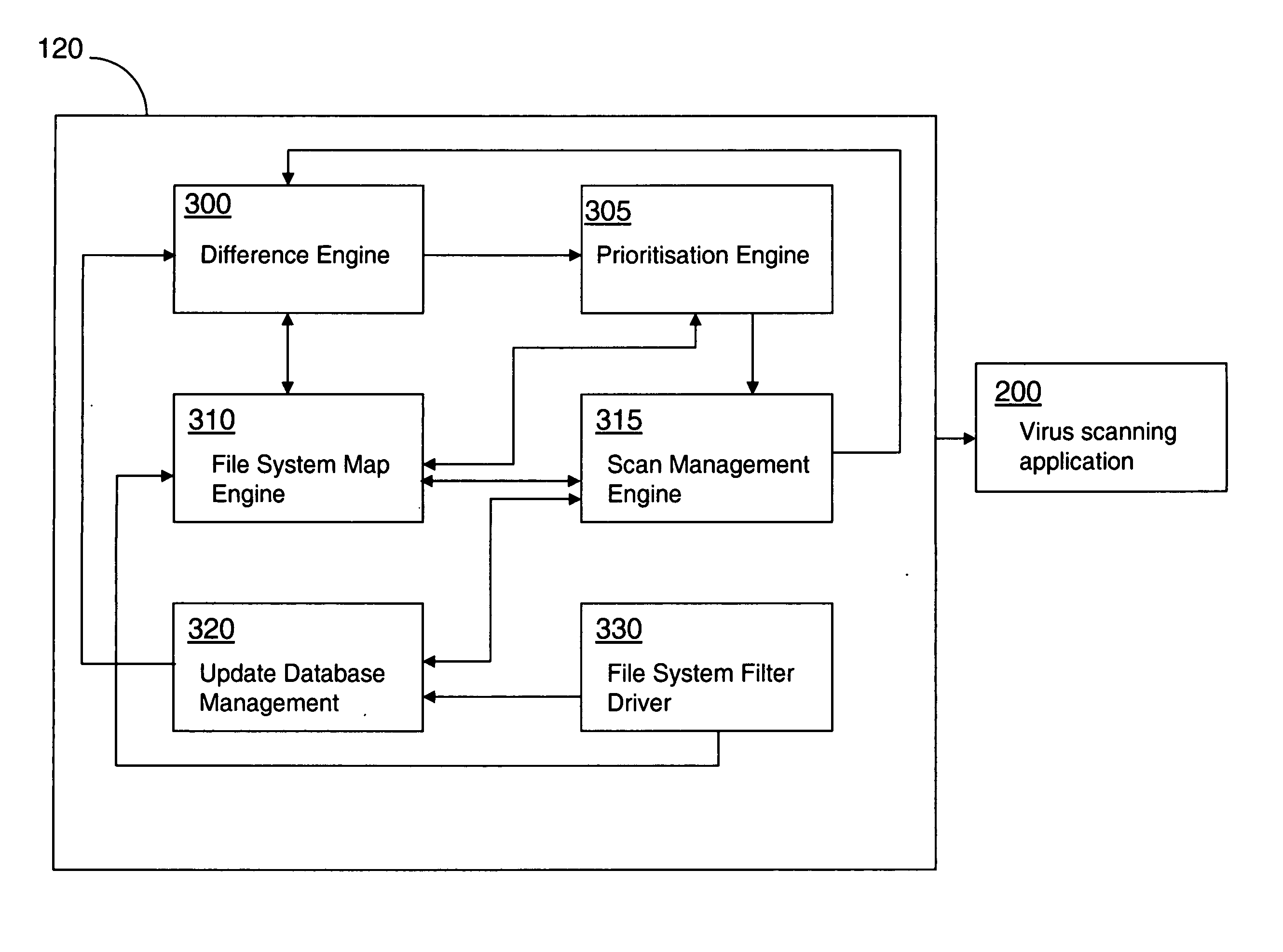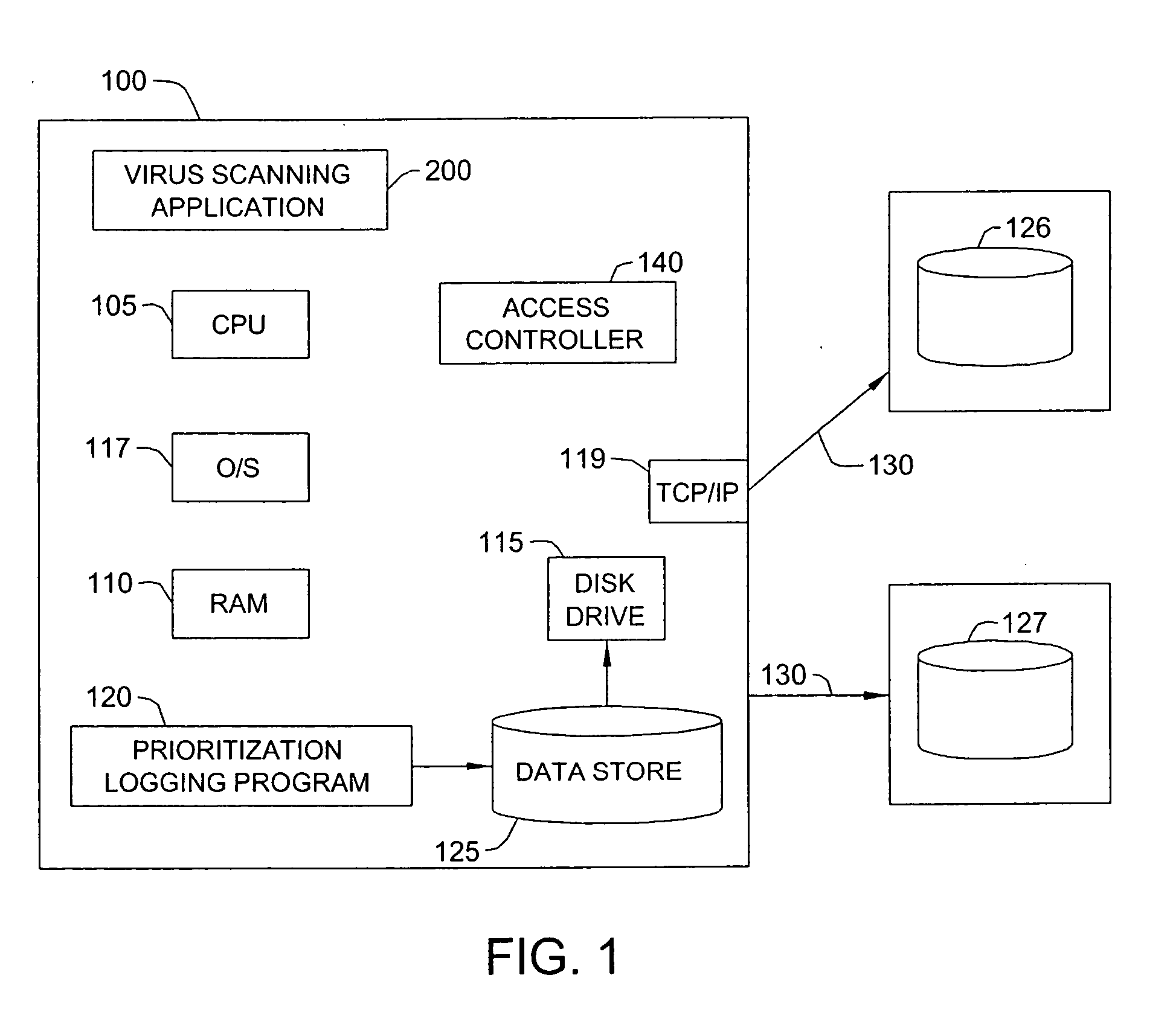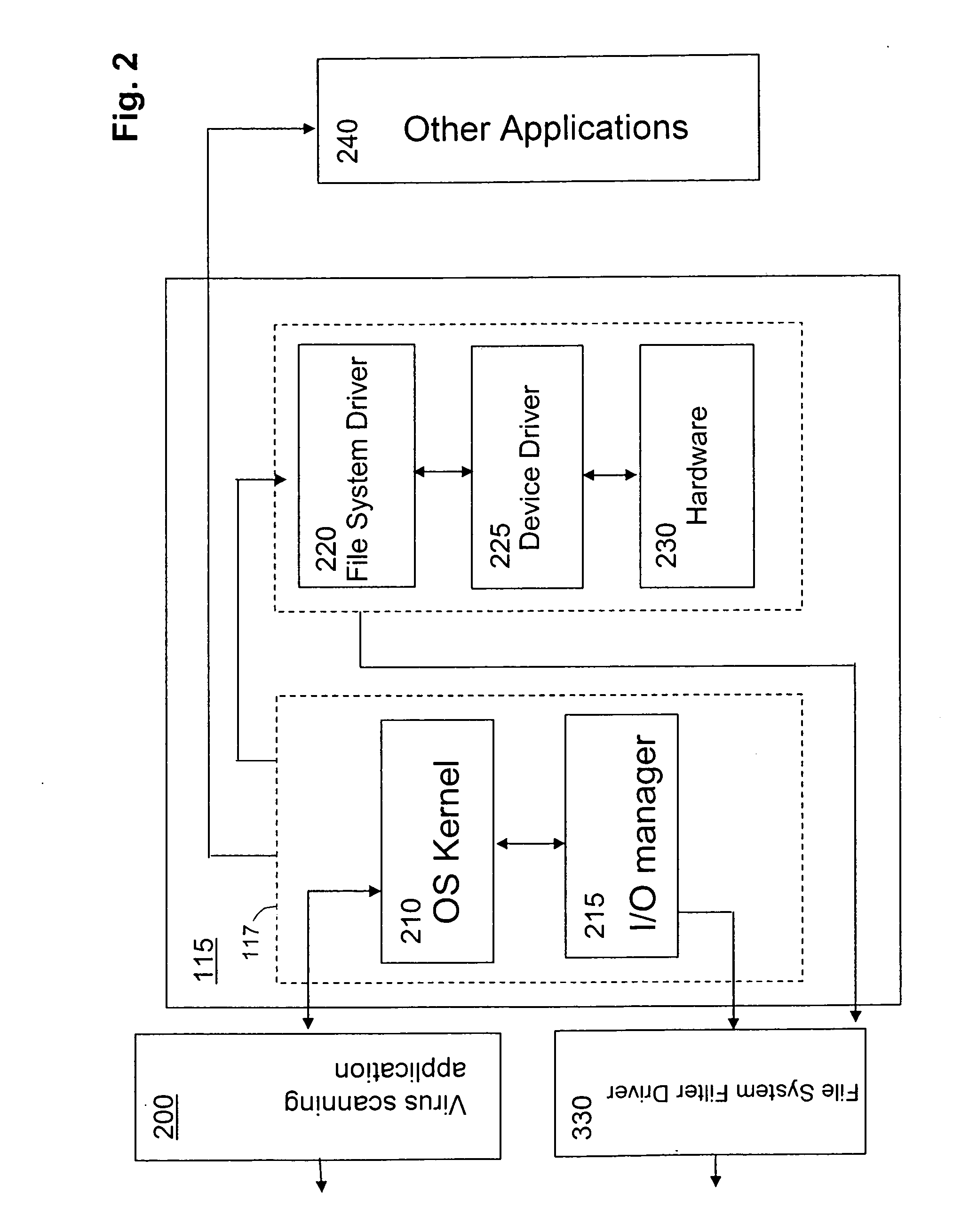System, method and program for scanning for viruses
- Summary
- Abstract
- Description
- Claims
- Application Information
AI Technical Summary
Benefits of technology
Problems solved by technology
Method used
Image
Examples
example 1
[0043] Volume C [0044] Volume serial number XYZ [0045] Directory of C:\[0046] $user [0047] documents [0048] accounts [0049] abc.log [0050] def.txt [0051] auto.exe
[0052] As can be seen from the foregoing example, the file system map comprises a number of identifiers which identify the name and serial number of the volume (or partition) followed by a list of directories and files residing within the identified directories. For example, volume C is the name of the particular volume in Example 1. However, a hard disk drive may comprise several volumes, for example, volume C and volume D. The volume serial number ‘XYZ’ is a unique identifier for the volume given by the application that formats the hard disk drive.
[0053] There are three directory entries in this example. indicates to the operating system this is a directory entry: $user, documents and accounts being the names of each of the individual directory entries. Within each directory entry () there may be one or more files, or ...
example 2
[0067] Volume C [0068] Volume serial number XYZ [0069] Directory of C:\[0070] $user; scanned 16 / 07 / 04; 9:00 [0071] documents; scanned 16 / 07 / 04; 9:01 [0072] accounts; scanned 16 / 07 / 04; 9:02 [0073] abc.log; scanned 16 / 07 / 04; 9:03 [0074] def.txt; scanned 16 / 07 / 04; 9:04 [0075] auto.exe; scanned 16 / 07 / 04; 9:05
[0076] As can be seen from the example 2, each directory and file is appended with a flag indicating that the directory, file or cluster has been scanned and the date and time that the scan operation took place. For example, $user is identified as being scanned on the 16 / 07 / 04 at 9:01. The date and time stamp reflect the date and time the directory, file or cluster was scanned.
[0077] In another embodiment of the present invention, the virus scanning application 200 may send a data feed comprising the name of each directory, file or cluster that is currently being scanned without providing any date and time stamp data. As the data feed is received by the scan management engine 315...
example 3
[0081]
File path C:\ActivityUnique value $userWrite#1 documentsCreate#2 accounts#3abc.log;delete#4def.txt;write#5auto.exe;write#6
[0082] The update database management engine 320 also stores cluster updates where direct access to the disk takes place bypassing updates to the file allocation table (FAT) and other constructs. This captures updates to the file system structure which is not captured by the file system map.
[0083] When the scan management engine 315 initiates a scan cycle, the difference engine 300 requests from the update management database the activity records for the file system structure. Upon receiving this instruction, the update management engine 310 creates a new instance of the journal to record all new activities and freezes the current instance of the journal. The frozen journal is not deleted until the scan management engine 315 determines that the virus scan cycle is completed (or is terminated) and a further process is performed to calculate which directorie...
PUM
 Login to View More
Login to View More Abstract
Description
Claims
Application Information
 Login to View More
Login to View More - R&D
- Intellectual Property
- Life Sciences
- Materials
- Tech Scout
- Unparalleled Data Quality
- Higher Quality Content
- 60% Fewer Hallucinations
Browse by: Latest US Patents, China's latest patents, Technical Efficacy Thesaurus, Application Domain, Technology Topic, Popular Technical Reports.
© 2025 PatSnap. All rights reserved.Legal|Privacy policy|Modern Slavery Act Transparency Statement|Sitemap|About US| Contact US: help@patsnap.com



